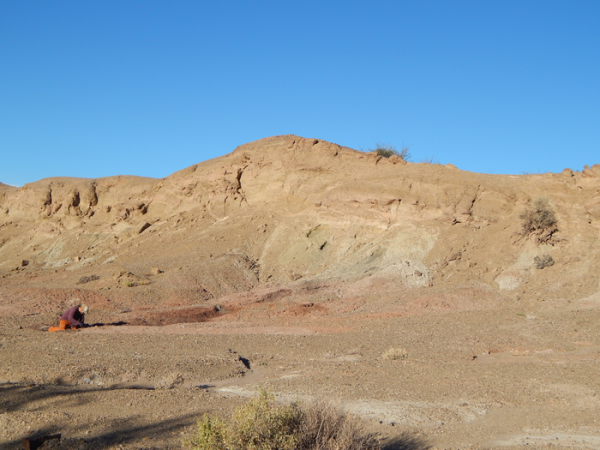A group of researchers from CONICET and the University of Utah demonstrated that during the time of the first dinosaurs, variations in the diversity and abundance of the plant and vertebrate animal species cannot be related to the climatic changes recorded throughout its deposition, in contrast with previous hypotheses.
In the new study, published in the open access journal Frontiers in Earth Science, the team of scientists investigated multiple independent lines of evidence (sedimentology, clay mineralogy, and geochemistry) to elucidate changes paleoclimatic conditions (such as mean annual precipitation and mean annual temperature) within the Ischigualasto Formation. These fossil-rich sedimentary rocks were deposited by rivers and streams between ~231 and 226 million years ago during the Late Triassic Period in what is now northwestern Argentina (La Rioja and San Juan provinces). In the middle of the formation, the researchers observed a clear change in conditions approximately from warmer, drier conditions to more temperate humid conditions, but no concurrent major changes could be identified in the fossil record.
“We conclude that variations in the abundance and diversity of species, as recorded by their first and last appearances in the fossil record, are better explained by preservation and sampling biases biases than by changes in climate,” said Adriana Mancuso, lead author and CONICET independent researcher at the Instituto Argentino de Nivología, Glaciología y Ciencias Ambientales in Mendoza, Argentina.
Read more at: University of Utah
A team member exposes fresh rock to obtain a geologic sample for geochemical lab analysis to reconstruct the paleoclimate record of the Ischigualasto Formation. (Photo Credit: Adriana Mancuso)


